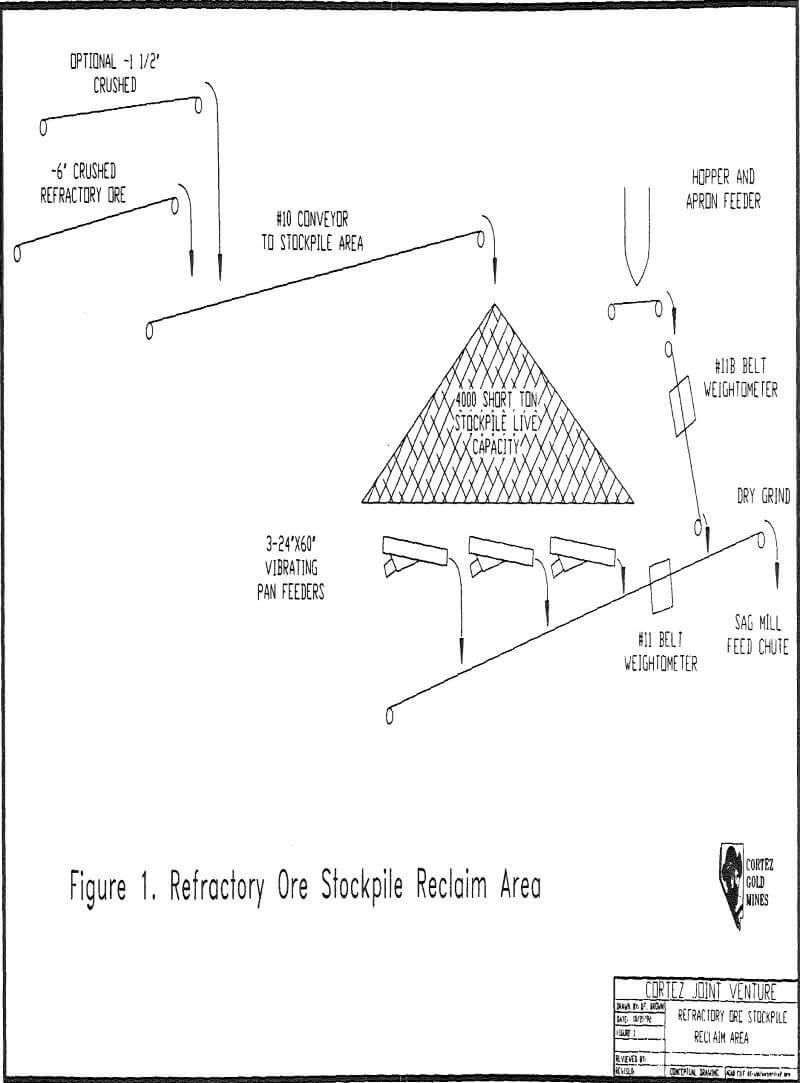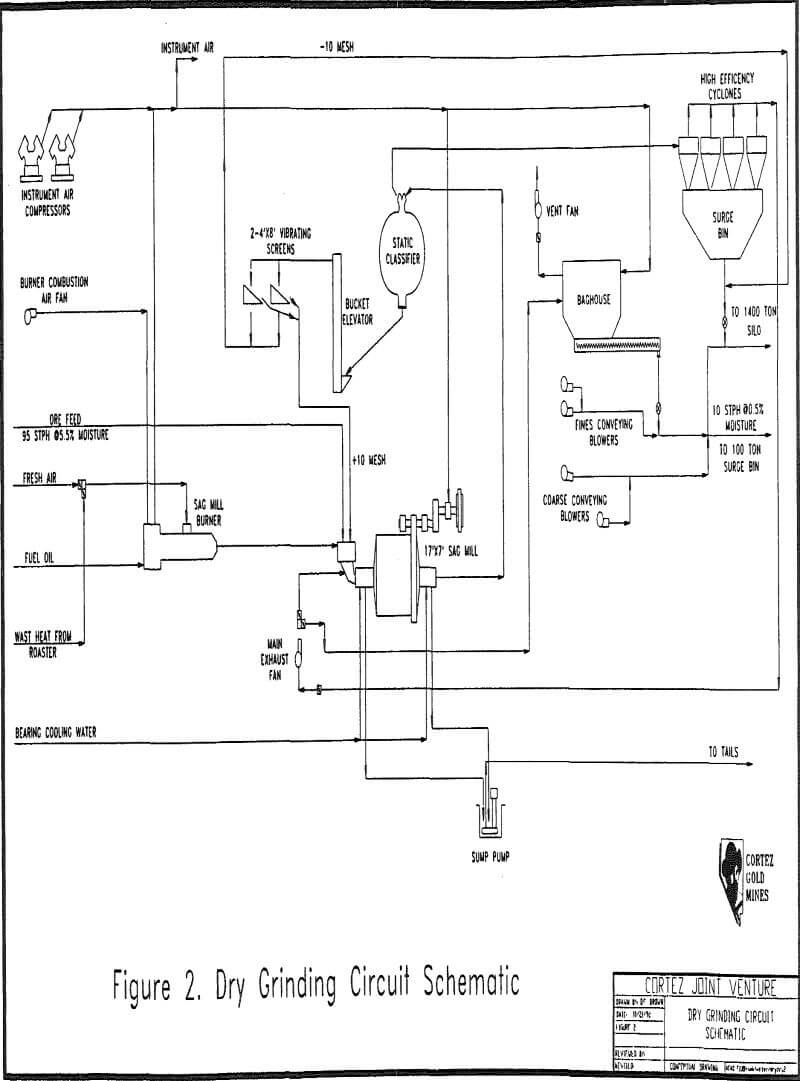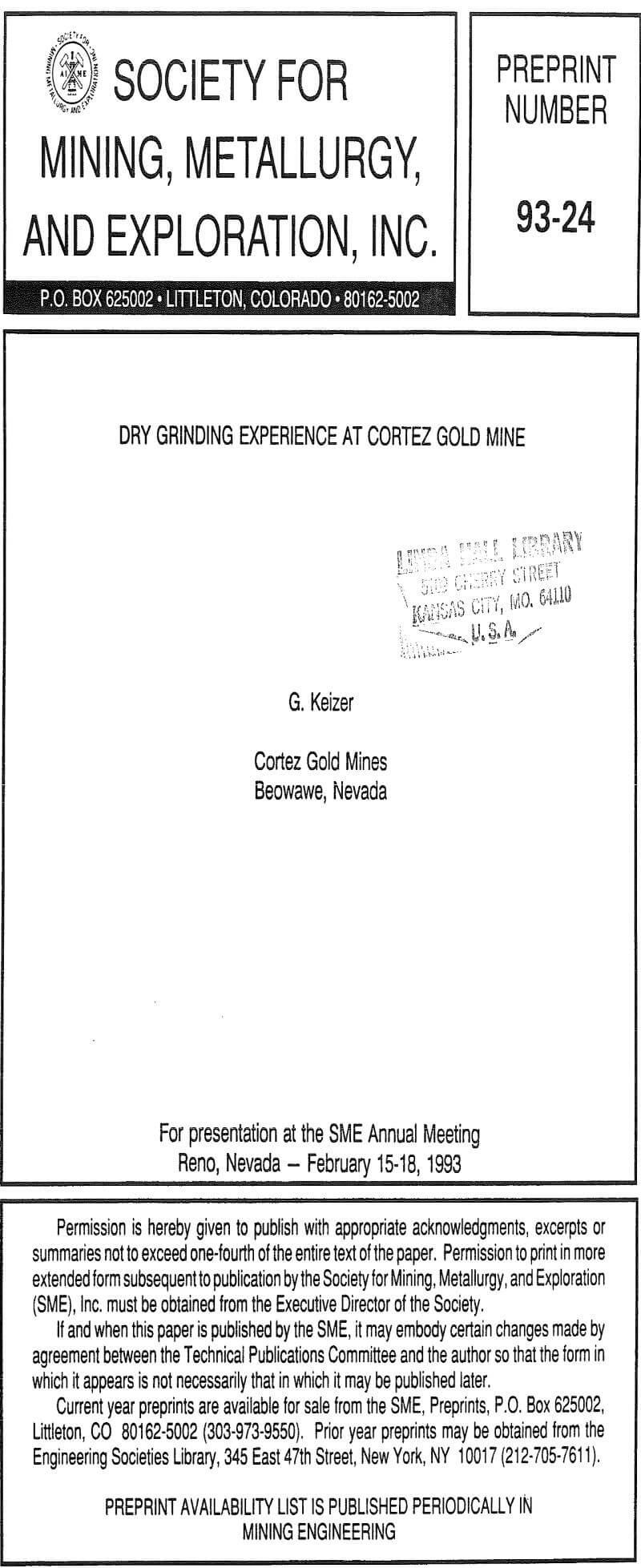The claims which supply oxide and refractory ore feed to the Cortez milling facility are located in both Lander and Eureka Counties. These include the Cortez and Horse Canyon deposits all operated by C.G.M. Joint Venture. Other deposits outside the C.G.M. claim area include; Fire Creek, Buckhorn, Gold Bar and Tonkin Springs. These deposits all occur along the Battle Mountain/Eureka Trend.
Since 1987 mining activity has been centered around the London Extension Pit where a small reserve amenable to CIL milling is being exploited, as well as the Horse Canyon deposit. However development and mining of these ore bodies encountered increasing amounts of carbonaceous refractory ore and, to a lesser degree, pyritic refractory ore in the mineralized zones. Typical grades of between .10 to .15 o.p.t. were produced.
Dry Grind Plant Feed Design Parameters:
90 STPH @ 5.50% moisture
99% minus 6″ blended Gold Acres and Horse
Canyon ores
Ore produced from the Gold Acres, Cortez and Horse Canyon pits is dumped in the crusher stockpile area by 50 and 85 ton haul trucks, keeping the various oxide and refractory ores separate. As required, a 980 loader will feed the various blend combinations into the crushing plant to replenish the oxide feed, crushed to -¾” as rod mill feed, or refractory ore blend, crushed to -6″ as SAG mill feed. Typically the moisture content in the ores is about 5 to 6%. The crushed refractory ore is conveyed to a stockpile area, underneath which are 3-24″ x 60″ variable speed vibrating pan feeders. The feeders feed onto a 30″ wide weightometer equipped conveyor. The ore discharges off the belt into the feed chute of the SAG mill, to which also is attached the 32 million btu/hour burner, which has an exit temperature of as high as 1500 deg F.
This control system could not be used reliably for this control function. The ground ore is then “air swept” out of the SAG mill into a static classifier which was designed to separate the final ground product from the coarse rock which required regrinding, and return it to the feed chute of the SAG mill.
Due to the high maintenance requirements of ancillary dry grinding equipment, particularly the pneumatic conveying system, the dry grinding circuit throughput remained at a disappointing 60-70 STPH (average). At times there were days during a given month where this circuit did not operate an average 20 hours per day. This serious maintenance problem led to the decision to install a mechanical conveying system consisting of screw conveyors, rubber conveyors and bucket elevators.
Waste heat from the fluid bed roaster is delivered to the dry grinding system via a 36″ diameter insulated steel duct. At an air temperature of over 600 deg F, and volume of 22,000 ACFM, this can save about 0.5 gallons of fuel oil per ton, or over $110,000 per year in fuel oil costs.
A variable speed apron feeder, conveyor and weightometer system was designed by Cortez personnel and serves as a backup dry grind feed system to the three variable speed vibrating pan feeders. Wet and freezing ore can plug all three pan feeders very quickly and the apron feeder allows a smooth transition with minimum feed interruption.



